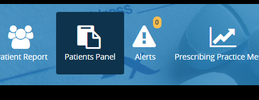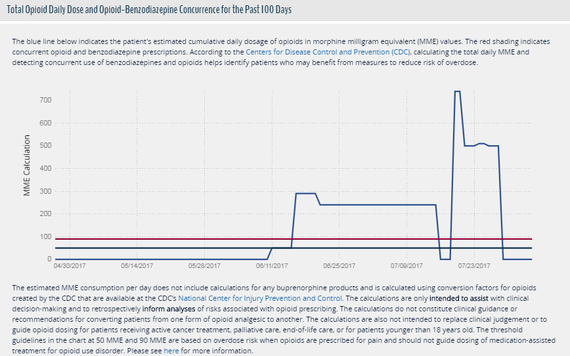 August 4, 2017
Outage notice: To allow us to deploy new functionality, WI ePDMP login will be temporarily unavailable beginning at 6:00am on Sunday, August 6. The outage may last up to three hours.
Based on user feedback, we are pleased to announce the following enhancements, which will eliminate several clicks on the Patient Report query page, beginning on August 6:
- The cursor will now default to the First Name field.
- After typing the patient's date of birth, using the Enter key on your keyboard will now submit the query.
 On August 6, prescribers will notice a new icon in their header that will take them to a feature of the WI ePDMP called the “Patients Panel.”
The Patients Panel will display a table that contains a snapshot of critical information about each patient to whom the prescriber has issued a controlled substance prescription order in the previous 100 days. The table will display the basic demographics of the patient, the patient’s estimated current MME level, and the total number of each type of alert in the WI ePDMP. Prescribers will be able to sort the columns and jump immediately to a patient’s prescription history report without retyping anything by clicking on the “View” button.
|

Beginning on August 6, there will be a change to the way the Wisconsin Enhanced Prescription Drug Monitoring Program (WI ePDMP) calculates estimated total opioid daily doses, as measured in morphine milligram equivalents (MME), for patients.
Based on guidance on MME calculations to inform determination of overdose risk from the Centers for Disease Control and Prevention, the WI ePDMP will no longer include any buprenorphine drugs in the MME calculations. The WI ePDMP will still display buprenorphine records as part of a patient’s dispensing history details, but no buprenorphine will be included in the MME calculations. The data displayed in patient history reports will more accurately reflect estimated MME levels to assist with clinical decision-making and to inform analyses of risks associated with opioid prescribing.
The change reinforces the idea that the calculations and comparative threshold guidelines displayed on the patient prescription history report at 50 MME and 90 MME are based on overdose risk when opioids are prescribed for pain and should not guide dosing of medication-assisted treatment for opioid use disorder.

To receive future updates about the WI ePDMP, make sure you are subscribed to PDMP Updates: Manage Subscriptions.
You can also "Like" our Facebook page to keep informed about enhancements to the WI ePDMP: https://pdmp.wi.gov/news.
Please contact us at pdmp@wisconsin.gov.
Andrea Magermans, Deputy Managing Director
|